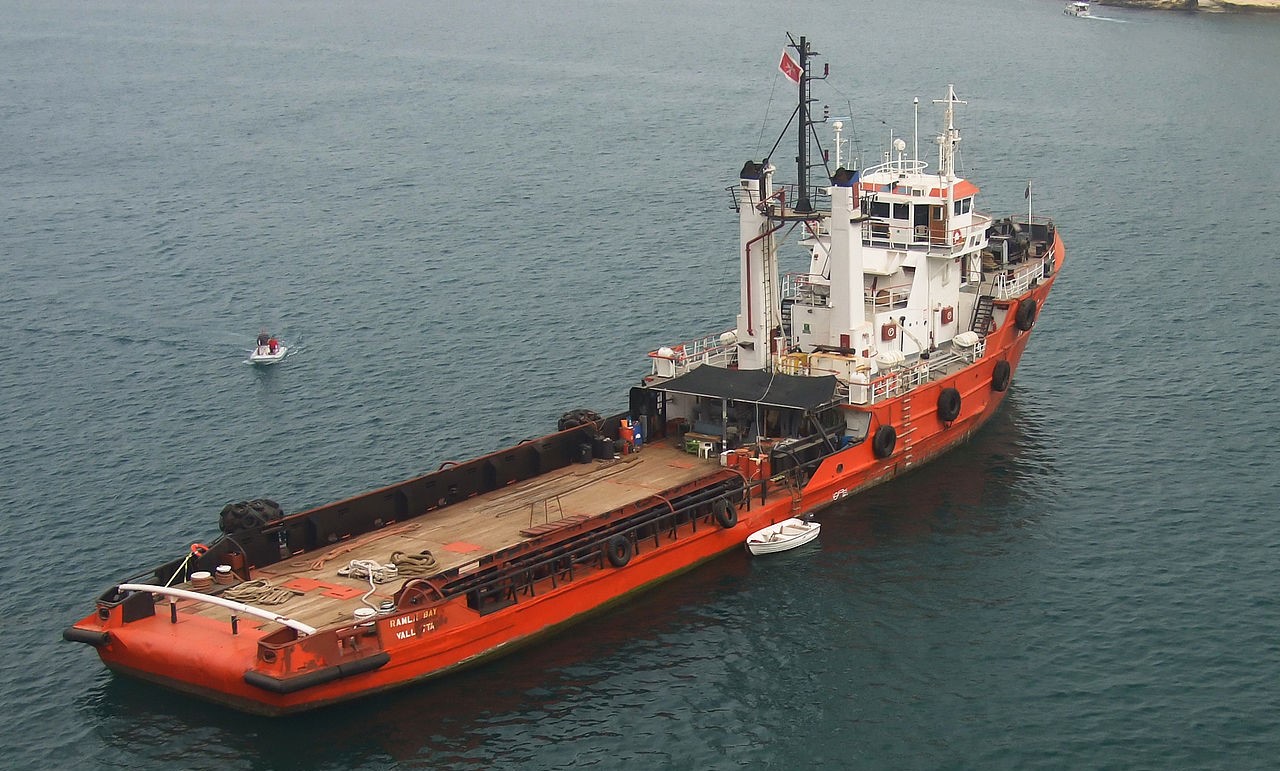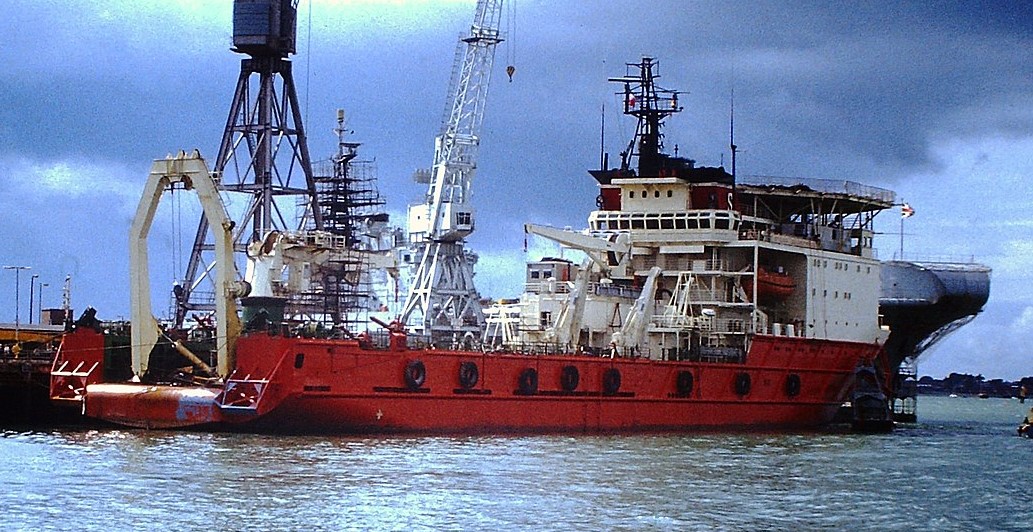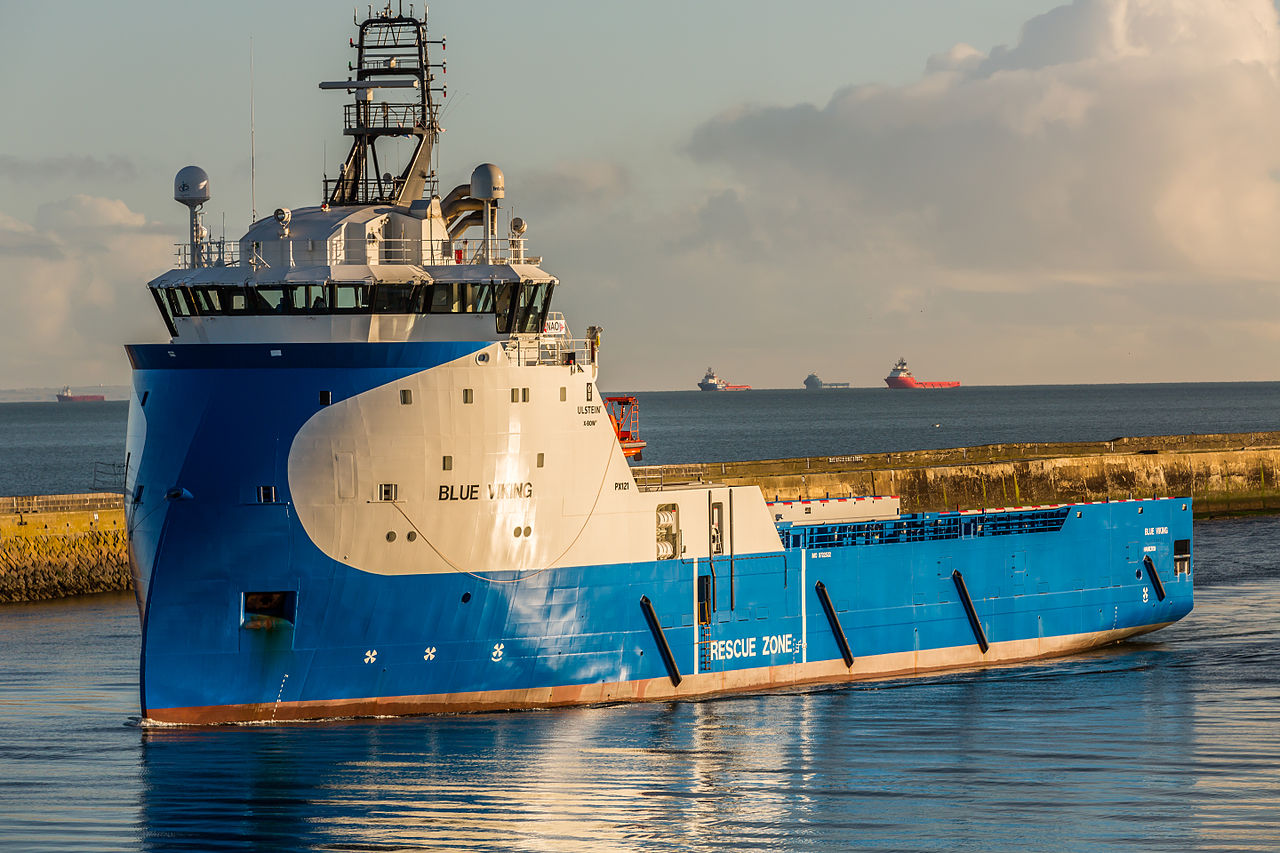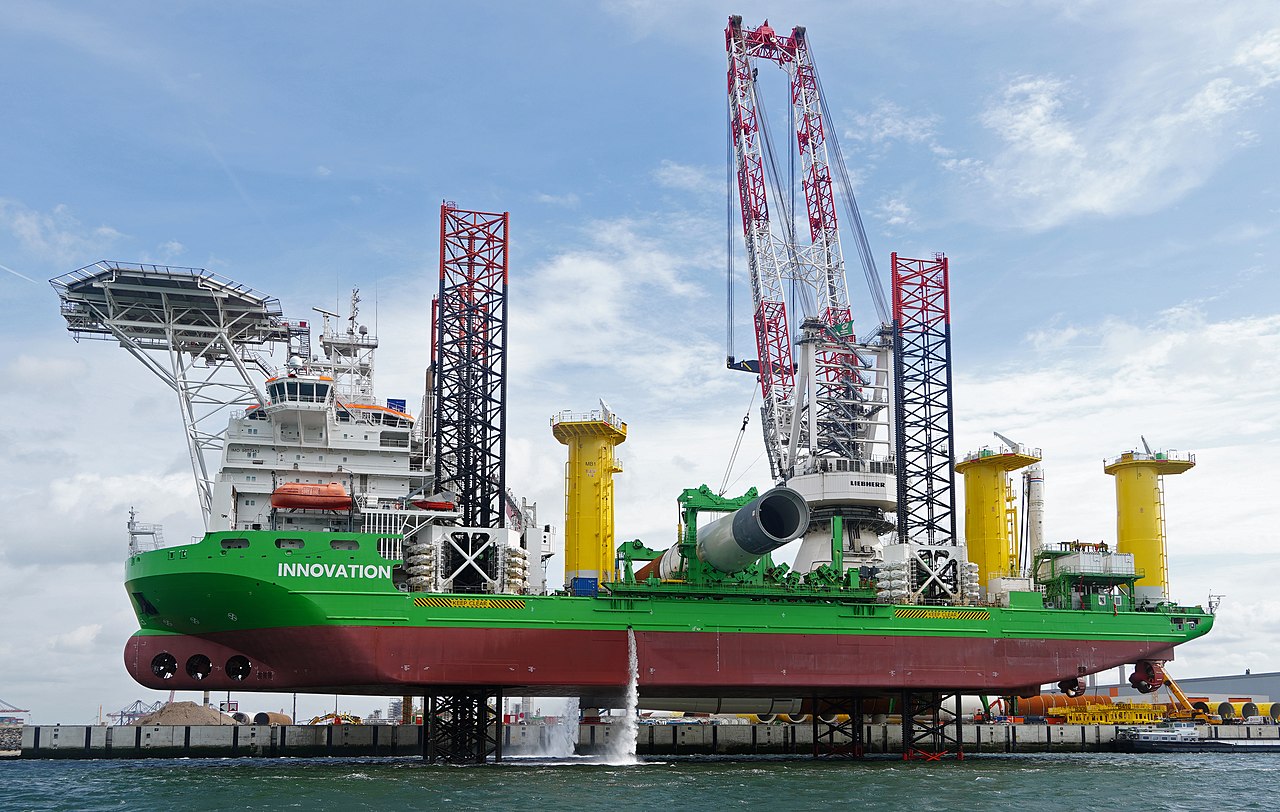The only truly novel variety of merchant ship to arrive in the years after WWII was the offshore service vessel, designed to cater to the increasing needs of the offshore oil and gas industry. Until WWII, offshore drilling was done with the rig on a permanant platform, often a pier extending from shore, or a barge that was simply submerged, with the limiting depth that of the barge's freeboard. But after the war, improved technology allowed drillers to work much further out at sea, and making it harder to supply them with everything they needed, from drill pipes and tools to food, fuel and fresh water. Initially, converted landing craft were used for this purpose, but they were unsatisfactory, and something better was needed.

Ramla Bay, the earliest supply vessel I could find a picture of
Alden 'Doc' LaBorde, president of a Louisiana company specializing in offshore drilling, came up with the solution, starting from a blank sheet of paper. The resulting vessel, Ebb Tide, was extremely odd-looking, with a bridge salvaged from a tugboat far forward and a low-freeboard open deck aft that took up 90 of the vessel's 119-foot length. In operation, it would come alongside the rig, where a crane would lift off the cargo on the deck, and hoses could be rigged for the water and fuel stored in tanks within the ship. The whole thing was deliberately kept very simple, allowing the ship to operate from whatever bayou happened to be closest to the drill site, and proved a tremendous success in operations in the Gulf of Mexico. Sisters of Ebb Tide, dating back to the 50s, remained in service for forty years.
The next operational change came with the development of the jackup rig. The teeth of the jacks could easily gash the hull of a supply vessel, and so the mooring technique changed. Instead of coming alongside, the captain would drop an anchor as he approached, then back towards the platform, where it would be secured by the stern. The jackups were soon followed by semi-submersible platforms which could be ballasted down for stability and anchored in place, unlocking far more of the world's oceans for drilling. The existing supply vessels were the obvious choice for the task of handling the anchors, and they were fitted with heavy winches. Initially, they would haul the anchor up to the stern and hand it over to the rig. If it had to be brought on deck, they would use an A-frame, but this was extremely dangerous, and it was soon superseded by a roller fitted to the stern.
Ocean Sprite, a later platform supply vessel
The new drilling technology had even bigger second-order impacts on the vessels which supported it. Previously, offshore drilling had largely been restricted to areas like the US Gulf Coast and the Persian Gulf, which were generally calm, but now work began in the stormy North Sea. Initially, it was supported by crews and ships from the US, but soon a domestic industry was developed with vessels more specialized for work in the North Sea. These were larger and had greater freeboard, and, for the first time, a extra thrusters (bow or omnidirectional) that greatly eased the task of maneuvering close in to a drilling rig. The cranes on the rigs tended to be short, so winches had to be fitted on the support vessels to move cargo to the stern for pickup. Even the funnels had to be changed, moved forward and made taller, as vessels from the Gulf of Mexico had repeated problems with waves going down their funnels and putting out the engines.
These new vessels were the beginning of the North Sea's leadership in the offshore industry, which continues to this day. Norwegian vessels in particular tended to be the most advanced, thanks to a quirk of tax law that made investment in them more profitable. The Norwegians led the introduction of technologies like variable-pitch propellers, which allowed for faster reversing by the engines, and improved reliability by letting the diesels, designed for use as generators, operate at a more or less constant speed. These ships were also larger to give greater cargo capacity in support of the more advanced drilling platforms.

Diving support vessel Stena Seaspread, recently returned from the South Atlantic
This era also saw the development of more specialized vessels. One type was the pipe carrier, designed to transport pipe to specialized barges that would lay pipelines from deep-sea wells to facilities ashore. Others were intended to support deep-sea diving operations, which were rapidly growing more sophisticated to match the increasing scope of deep-sea work. In the past, diving had just been some pumps and suits, but now it required decompression chambers, medical facilities, pressurized living spaces and even labs to monitor environmental quality. Other vessels were specialized in disaster response, with facilities for survivors and heavy firefighting gear. These unfortunately were quite busy in the early years of the offshore industry, which saw several notable disasters.

Blue Viking, a modern platform supply vessel
But specialized rescue vessels were expensive, and soon enough fire monitors and medical facilities became standard on more typical offshore support ships. Also standard were dynamic positioning systems, which linked the ship's propulsion together with computers and sensors to keep the vessel in one location despite the actions of wind and wave. These required a fixed reference, and some early systems used a weight on a long wire lowered to the seabed, while others used fixed radar beacons. Today, differential GPS is common, and designers have begun to experiment with alternative bow forms, presumably for better seakeeping.
In recent years, offshore vessels have begun to diversify away from petroleum, with the development of ships designed to install offshore wind turbines. These are extremely unusual, ship-type self-propelled vessels that jack up to plant the bases of the turbines. The reason for this configuration is to allow the vessel, which can carry up to 5 turbine bases, to quickly transit between installation sites without the need for a tug.

Wind turbine installation ship Innovation
The relentless search for oil and gas has also seen a few vessels specialized for environments even more difficult than the North Sea. Most notable are the vessels designed for operation in the Arctic seas, which are designed to break ice and stand the rigors of the polar environment. One such ship is the Canadian Miscaroo, originally built for work in the Beaufort Sea and later deployed in the Sakhalin oil fields of Russia.
But offshore vessels are far from the only vessels designed for operation in ice. As the polar regions grow in importance, icebreakers will as well. We'll examine the history of these ships next time.

Comments
That really puts into perspective how ferocious the North Sea is. I knew that the waves there were big, but the notion of them being large enough to crest over a ship, go down the funnel, and put out the engines from the top is a new one.
This is the standard method for mooring yachts in the (non-tidal) Mediterranean, as it means that more can fit along a harbour wall. I've also seen it used by ferries- though some ferries making a short stop will dispense with the anchor and simply secure stern lines then continuously motor forward against them. Of course, the prop wash reflecting off the harbour wall makes this unpleasant for anything else moored nearby...